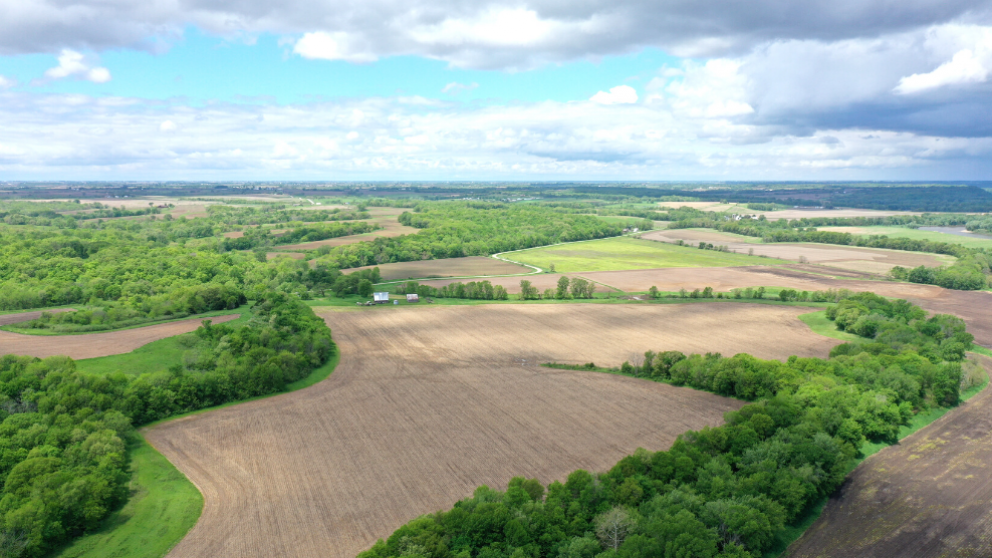June 2020 Wallace’s Farmer “MarketPlace Extra”

Doug Hensley, President of Hertz Real Estate Services, Nevada, IA
Uncertainty about the future is something that has always existed. All the challenges presented by COVID-19 over the past 2 to 3 months have added yet additional layers of uncertainty and change to our world. You know what hasn’t changed? The rural countryside turning green again. It is really nice to see! This visual reality is just one of a handful of things that helps root me with a proper perspective of, and expectation for, the future.
In agriculture, probably as much or more than any other industry, we are conditioned to expect uncertainty. We never know what the weather will be more than a few days out. From a marketplace perspective, we rarely have more than an educated estimate of what things will look like a year from now. This is what makes major, long-term decision-making, so difficult. However, we work to inform ourselves by reviewing our past experiences and outcomes, mixed with what we can see and reasonably expect from the future. It is not a perfect recipe, by any means. But, in agriculture, we’ve become comfortable in making significant decisions based on that mix of imperfect and incomplete information.
So, what do we know today about the short-term in 2020 agriculture? Certainly, commodity prices have been pressured because of worldwide demand destruction. COVID-19 has specifically impacted ethanol demand and production, which consumes nearly 40% of our U.S. corn crop. COVID has also specifically impacted livestock demand, production, and processing. Like ethanol, livestock demand impacts another 40% of our corn crop. So, in the short-term, while COVID-19 keeps consumers at home, it is causing both disruption and pain for participants in all these markets.
What about longer term? I believe the prospects are much brighter. We came into this disruptive and painful period with a very healthy marketplace. Remember, across the State of Iowa more than 80% of all land is owned mortgage-free. So, we are not likely to see an overwhelming need to sell land to cover mortgage payments or other cash-flow needs in a tight or negative margin period. Secondly, crop insurance pricing levels for 2020 crop production were set in February, which was before the Corona-crisis hit. And while neither the $3.88/bushel guarantee for corn and $9.17/bushel guarantee for soybeans is record-setting, people may come to appreciate that baseline support. Next, long-term interest rates remain at, or near, all-time lows. For big decisions that are made for the long-term – decisions like buying a farm – being able to match favorable interest rate terms to the decision impact is very helpful. Lastly, as someone with a farm production background, I maintain a positive outlook about our collective ability to survive, and ultimately, thrive. Similar to past disease outbreaks (e.g., Polio), I am very confident that our medical community will rise to the occasion and develop a vaccine that will help us pull COVID-19 out by the roots.
The industry of agriculture is presented new challenges and uncertainties every year. Some challenges can seem bigger than others, and COVID-19 is an enormous challenge for our 2020 growing season and marketing year. Having said that, it is also important to keep a proper perspective. This challenge, while momentous, shall pass. And even in the face of gathering storm clouds in the form of low commodities, ethanol weakness, and livestock sector disruptions, the farmland market is largely keeping its collective head about it, as the various recent farmland sales below reflect.
NORTHWEST
Sioux County:
80 +/- acres, located southwest of Maurice, recently sold at public auction for $12,800 per acre. The farm consisted of 75 +/- tillable acres with a CSR2 of 85.5, and equaled $160/CSR2 point on the tillable acres.
NORTH CENTRAL
Franklin County:
233 +/- acres, located near Hampton, recently sold for $9,465 per acre. The farm consisted of 220 +/- tillable acres with a CSR2 of 90.8, and equaled $110/CSR2 point on the tillable acres.
NORTHEAST
Black Hawk County:
71 +/- acres, located north of Orange and within Waterloo city limits, recently sold for $12,000 per acre. The farm consisted of 69 +/- tillable acres with a CSR2 of 86.4, and equaled $143/CSR2 point on the tillable acres.
WEST CENTRAL
Crawford County:
155 +/- acres, located northeast of Deloit, recently sold for $7,350 per acre. The farm consisted of 138 +/- tillable acres with a CSR2 of 72.7, and equaled $114/CSR2 point on the tillable acres.
CENTRAL
Story County:
240 +/- acres, located north of Nevada, recently sold for $10,500 per acre. The farm consisted of 238 +/- tillable acres with a CSR2 of 87.5, and equaled $121/CSR2 point on the tillable acres.
EAST CENTRAL
Benton County:
182 +/- acres, located southwest of Urbana, recently sold for $9,600 per acre. The farm consisted of 172 +/- tillable acres with a CSR2 of 79.3, and equaled $128/CSR2 point on the tillable acres.
SOUTHWEST
Cass County:
80 +/- acres, located southeast of Atlantic, recently sold for $7,890 per acre. The farm consisted of 72 +/- tillable acres with a CSR2 of 81.0, and equaled $108/CSR2 point on the tillable acres.
SOUTH CENTRAL
Warren County:
114 +/- acres, located northwest of Lacona, recently sold for $3,100 per acre. The farm consisted of 100 +/- tillable acres with a CSR2 of 41.2, and equaled $86/CSR2 point on the tillable acres.
SOUTHEAST
Washington County:
153 +/- acres, located northeast of Washington, recently sold for $7,448 per acre. The farm consisted of 120 +/- tillable acres with a CSR2 of 77.1, and equaled $123/CSR2 point on the tillable acres.
Hertz Real Estate Services compiled this list, but not all sales were handled by Hertz. Call Hertz at 515-382-1500/800-593-5263 or visit www.Hertz.ag.





